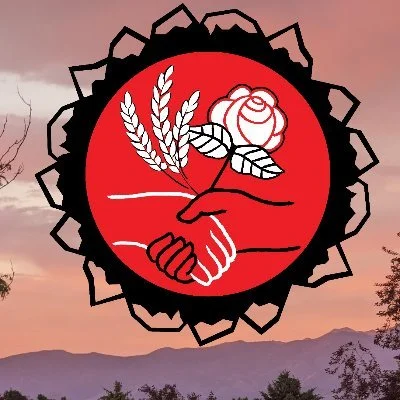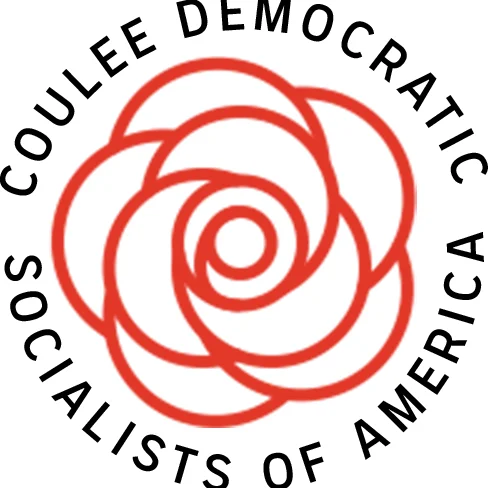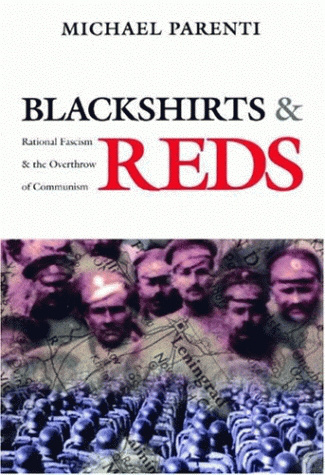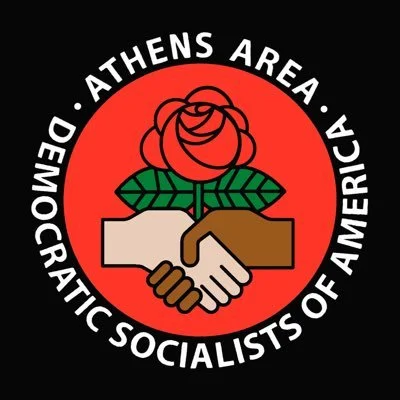

Protected: May Regular Meeting Minutes
This post is password protected. You must visit the website and enter the password to continue reading.


Beat Swords Into Plowshares - a Conversation with Mark Colville


DSA book club is starting ‘Blackshirts and Reds’
“The Coulee DSA books club will begin reading Michael Parenti’s “Blackshirts and Reds” beginning Tuesday, May 25th at 7 PM. Parenti’s 1997 text is considered a classic among many on the left. Among many themes, the book explores how corporate power has embraced fascism throughout history, how historical revolutions freed populations from the forces of exploitation, the enduring power of Marxism, and the importance of class analysis in understanding and comprehending the political realities of our time.

The Coulee DSA Book Club meets every Tuesday night at 7 PM, It doesn’t require regular attendance, so feel free to stop by or drop in and out as you have time. Reading is strongly encouraged but not required. The discussion often goes off on tangents and covers a broad array of topics, and we would love you to add your voice to the discussion! Reply to this email if you are interested in joining and we will connect you to the group. “
The post DSA book club is starting ‘Blackshirts and Reds’ first appeared on Coulee DSA.


Demand BadgerCare Expansion Now!
How would your life change if you no longer had to worry about healthcare? Maybe you would quit that job you hate and start a business, or work part-time so you could spend more time with your kids. Maybe you could finally get that dental work you have been putting off, or use the money you save on insurance premiums to pay off debt.
We say “healthcare is a human right” because it is a moral and practical imperative to ensuring people can live lives of value, and because providing it would eliminate unnecessary suffering in all our communities. Ensuring universally accessible healthcare would literally SAVE LIVES.
Just as importantly, it would break the shackles that our current for-profit healthcare system places on average Americans. In the “freest nation in the world”, many of us are beholden to jobs we hate, working long hours to pay up to a third of our income for insurance (if we are lucky enough to have it), never able to reach the financial or life goals we set for ourselves. A universal, single-payer healthcare system will open up opportunities for the average American. It will give everyone more flexibility in employment, prevent crippling medical debt, and ensure care to marginalized populations.
Right now in Wisconsin we have an opportunity to take a step closer to this goal, by accepting federal Medicaid expansion funding and using it to expand the WI BadgerCare program to cover those making between 0-138% of the poverty line. This would provide affordable healthcare to an additional 91,000 Wisconsinites, while saving our state approximately $630 million in taxes. While Governor Evers has proposed this expansion in his biennial budget, our legislature does not currently support accepting these federal funds.
Coulee DSA is fighting in coalition with other groups across the state to demand the WI legislature include BadgerCare expansion in their next budget. You can help by reaching out to your local legislator to let them know you support this legislation or by helping CDSA spread the word at our upcoming canvassing events in Viroqua.
Coulee DSA’s Health Care Justice working group meets every other Wednesday at 7 PM. Contact us at couleedsa@gmail.com if you are interested in learning more or joining up.
The post Demand BadgerCare Expansion Now! first appeared on Coulee DSA.


Capitalism as Modern Religion - A Conversation with Dr. Eugene McCarraher


DSA Book Club’s Next Read – Before The Next Bomb Drops
Did you know that Coulee DSA has a book club? It started shortly before Covid hit, and currently meets online every Tuesday night at 7 PM. The group discusses books, articles, and essays, as well as podcasts and documentaries. Next Tuesday, 5/11, is a great time to join as the group is starting a new book, Before The Next Bomb Drops: Rising Up from Brooklyn to Palestine by Remi Kanazi.
The group doesn’t require regular attendance, so feel free to stop by or drop in and out as you have time. Reading is strongly encouraged but not required. The discussion often goes off on tangents and covers a broad array of topics, and we would love you add your voice to the discussion! Reply to this email if you are interested in joining, and we will connect you to the group.

The post DSA Book Club’s Next Read – Before The Next Bomb Drops first appeared on Coulee DSA.


CDSA Blog Kickoff
Hey, CDSA members, supporters, and awesome community members! Coulee Democratic Socialists of America is revamping our communications stream.
Going forward, our newsletter will be broken up into regular blog posts. We have carried your subscription over from the newsletter to our blog here on the Coulee DSA website.
Posts will include info on our working groups, the DSA as a whole, local campaigns and projects, and more. We are aiming for an email a week or so–and we promise not to spam you with pointless posts.
If you are looking for more info, check out our website, or email us back.
The post CDSA Blog Kickoff first appeared on Coulee DSA.


Georgia DSA Pass the PRO Act Phonebank

Athens Area DSA will be partnering with other DSA chapters in Georgia to host a Pass the PRO Act phonebank on Saturday, May 8th from 3:00 – 5:30pm. Join us and comrades from all across the state to demand that Senators Warner, Kelly, and Sinema fight for workers and support the PRO Act! Register for the phonebank here


May Day (and Night) Celebration!
Lets meet in socially-distanced and masked person-space! Saturday May 1st Athens Area DSA will be at Bishop Park with games and snacks for a family friendly gathering. Come chat, learn about what we are doing, see where you can plug in! Later we will move to a casual hang out at Little Kings (adults only) starting at 7pm. Come to either or come to both! We are excited to see and speak to your faces!
RSVP for the event here: https://fb.me/e/KR0njmt2

